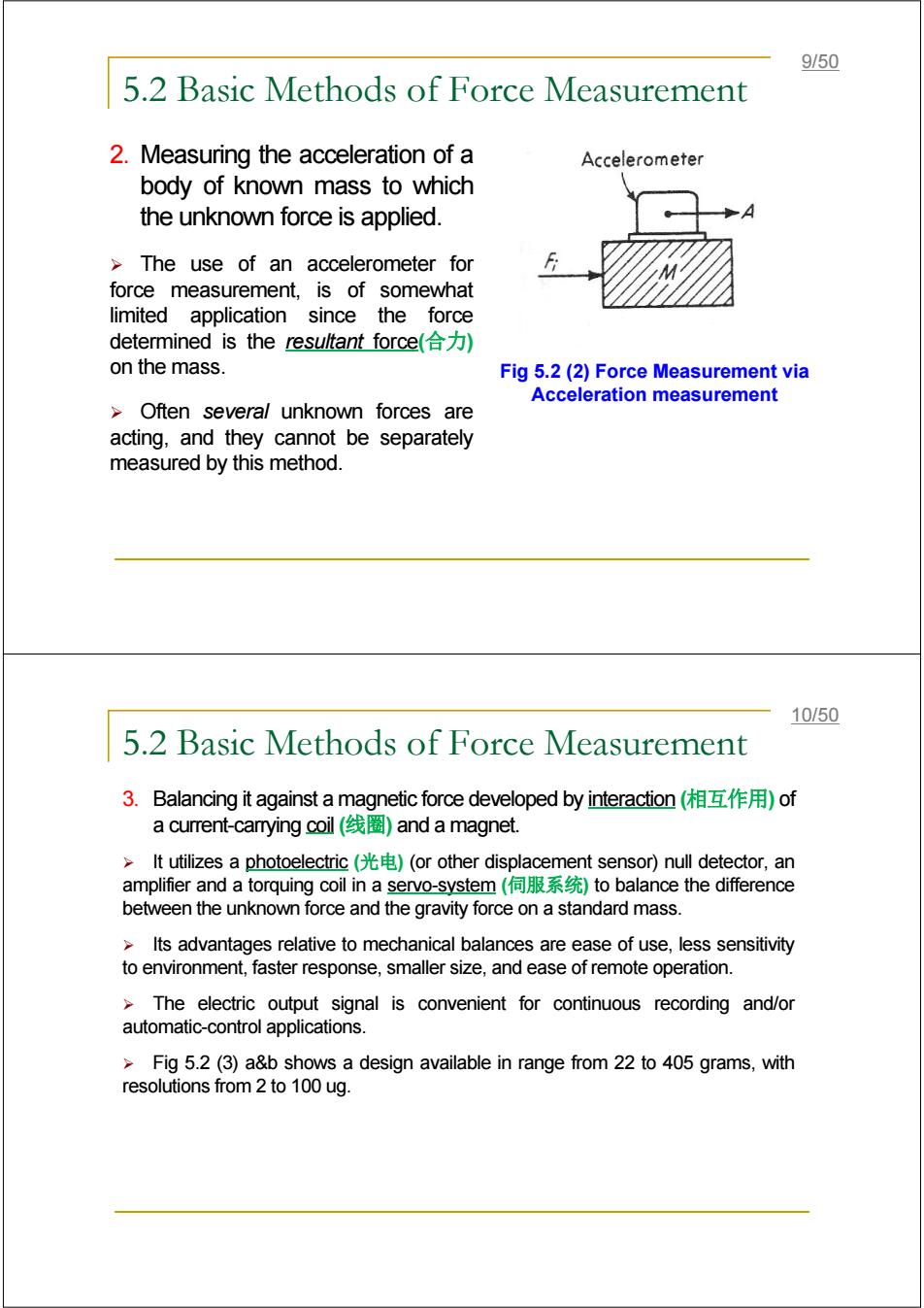正在加载图片...

9/50 5.2 Basic Methods of Force Measurement 2.Measuring the acceleration of a Accelerometer body of known mass to which the unknown force is applied. The use of an accelerometer for force measurement,is of somewhat limited application since the force determined is the resultant force(合力) on the mass. Fig 5.2(2)Force Measurement via Acceleration measurement Often several unknown forces are acting,and they cannot be separately measured by this method. 10/50 5.2 Basic Methods of Force Measurement 3.Balancing it against a magnetic force developed by interaction(相互作用)of a current-carrying coil(线圈)and a magnet.. It utilizes a photoelectric ()(or other displacement sensor)null detector,an amplifier and a torquing coil in a servo-system(伺服系统)to balance the difference between the unknown force and the gravity force on a standard mass Its advantages relative to mechanical balances are ease of use,less sensitivity to environment,faster response,smaller size,and ease of remote operation. The electric output signal is convenient for continuous recording and/or automatic-control applications. Fig 5.2(3)a&b shows a design available in range from 22 to 405 grams,with resolutions from 2 to 100 ug.5.2 Basic Methods of Force Measurement 2. Measuring the acceleration of a body of known mass to which the unknown force is applied. ¾ The use of an accelerometer for force measurement, is of somewhat limited application since the force determined is the resultant force(合力) on the mass. ¾ Often several unknown forces are acting, and they cannot be separately measured by this method. Fig 5.2 (2) Force Measurement via Acceleration measurement 9/50 5.2 Basic Methods of Force Measurement 3. Balancing it against a magnetic force developed by interaction (相互作用) of a current-carrying coil (线圈) and a magnet. ¾ It utilizes a photoelectric (光电) (or other displacement sensor) null detector, an amplifier and a torquing coil in a servo-system (伺服系统) to balance the difference between the unknown force and the gravity force on a standard mass. ¾ Its advantages relative to mechanical balances are ease of use, less sensitivity to environment, faster response, smaller size, and ease of remote operation. ¾ The electric output signal is convenient for continuous recording and/or automatic-control applications. ¾ Fig 5.2 (3) a&b shows a design available in range from 22 to 405 grams, with resolutions from 2 to 100 ug. 10/50